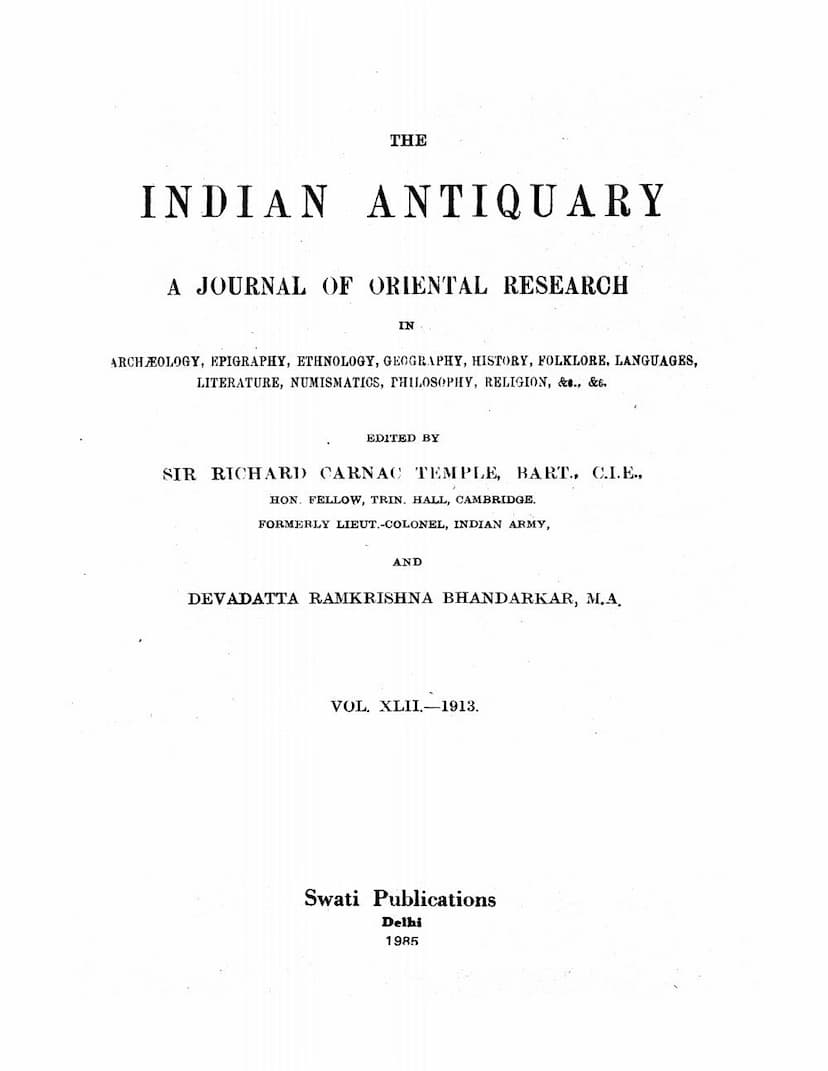Indian Antiquary Vol 42
Added to library: September 1, 2025

Summary
This volume, "The Indian Antiquary, Vol. XLII. (1913)," published by Swati Publications, is a collection of scholarly articles covering a wide range of Oriental research in archaeology, epigraphy, ethnology, geography, history, folklore, languages, literature, numismatics, philosophy, and religion. Edited by Sir Richard Carnac Temple and Devadatta Ramkrishna Bhandarkar, the journal features contributions from numerous academics.
While the title of the volume does not explicitly highlight Jainism, the provided text (specifically pages 42-48) includes an article by L. P. Tessitori titled "The Paramajotistotra: An Old Braja Metrical Version of Siddhasenadivakara's Kalyanamandirastotra."
This article focuses on:
- Discovery and Description: Tessitori discovered a vernacular version of the Kalyanamandirastotra by Siddhasenadivakara in a Jain manuscript collection in Florence. The manuscript is incomplete but provides valuable insights into the text.
- Linguistic Analysis: The article delves into the Old Braja language of the translation, noting its spread westward and identifying various linguistic peculiarities that suggest influences from Marwari or Gujarati dialects, possibly indicating its composition in a region west of the typical Braja-speaking area.
- Authorship and Affiliation: Tessitori suggests a potential identification of the author of the Paramajotistotra with Rupachanda, the author of the Panchamangala, another work in the same collection, due to shared linguistic traits and geographical proximity in their composition.
- Metrical Structure and Content: The Paramajotistotra is arranged in chaupai and doha meters, with the preserved portion containing 26 stanzas. The initial stanza, which lends the work its title, is not found in the Sanskrit original and is considered an addition by the vernacular poet.
- Comparison with the Original: The article highlights the translator's skill in rendering the intricate meaning and puns of the Sanskrit Kalyanamandirastotra into a different language while maintaining conciseness and numerical correspondence of verses. The vernacular version is sometimes found to be more elegant than the original Sanskrit text.
- Siddhasenadivakara and Jain Literature: The article briefly mentions Siddhasenadivakara as the original author and notes that the Kalyanamadira-stotra is respected by both Digambara and Shvetambara Jain sects.
In essence, this article within the broader "Indian Antiquary" volume provides a scholarly examination of a Jain literary work, focusing on its linguistic aspects, comparative analysis with its Sanskrit original, and its significance within the context of Jain tradition. It showcases the meticulous research involved in the study of ancient Indian literature and languages.